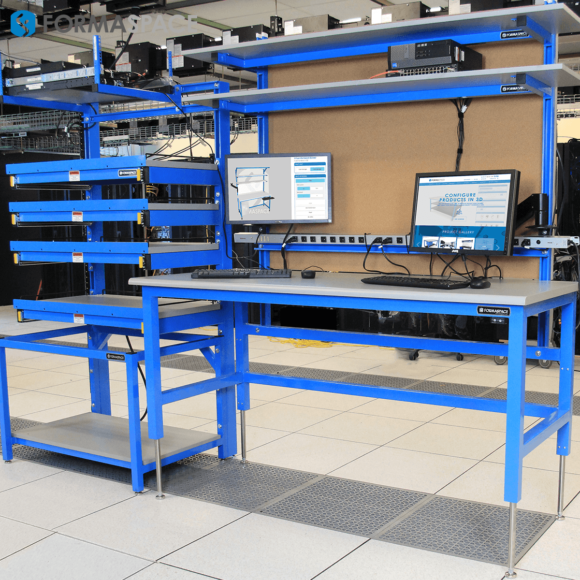What is Liquid Metal Printing (LMP)?
Researchers at MIT have developed a new process for creating metal parts called liquid metal printing (LMP).
Rather than relying on using a laser to heat metal powders to form solid metal parts – an approach commonly used in Selective Laser Sintering (SLS) or the higher-temperature Selective Laser Melting (SLM) process – liquid metal printing works directly with molten metal, pouring a new part directly on a bed of sand, which helps constrain the shape of the molten metal while it cools in place until it can be safely removed.

How does Liquid Metal Printing stack up to Conventional Metal Printing Methods such as Selective Laser Sintering (SLS) or Selective Laser Melting (SLM)?
Liquid metal printing is not a one-to-one replacement for conventional 3D metal printing. Let’s look at how it stacks up, broken down by categories:
· Shape Complexity
Unlike conventional metal printing (which can create complex shapes that can exceed the capabilities of 5-axis CNC machine tools), MIT’s liquid metal printing prototype is limited to making simple shapes that are constrained to a flat plane. While this is a major shortcoming, many parts, such as structural support frames, are essentially 2D in nature and can be printed using this method.
· Surface Finish / Post Processing
Conventional SLS or SLM metal printing can produce complex, detailed parts with fairly smooth exterior surfaces. Depending on the application, these printed exterior surfaces may be usable as is or be further refined/polished.
In contrast, the output of liquid metal printing is not uniform at all; instead, it’s characterized by noticeable “blobby” surface features. While these parts can be utilized “as-is” in hidden locations, most LMP parts will be considered an intermediate work-in-process (e.g. a metal “billet”) that will require additional machining to produce a smooth, dimensioned surface.
· Throughput Volume
Given that Liquid Metal Printing can pour a single part very quickly, it should be faster than conventional 3D metal printing, which requires a slow layer-by-layer additive process to create a single part.
On the other hand, LMP parts will need to cool and harden off before removal, which will take a discrete amount of time. Also, if you are only making a single part, the time required to heat the raw material (e.g. metal) in a crucible might cut into LMP’s throughput advantage.

· Strength/Fatigue Resistance
The hierarchy of fatigue resistance typically goes like this: forged parts (with their highly-aligned metal grains) are generally the best at resisting fatigue, second are parts machined from solid heat-treated metal billets, then come extruded and cast parts (whose metal grains are not well aligned), followed by conventionally welded parts which are typically the least resistant to fatigue failures (depending on the welding technique used).
Where do Conventional Selective Laser Sintering (SLS) or Selective Laser Melting (SLM) fit in?
Metallurgists looking at these sintering and melting processes have been able to identify micro gaps and occlusions that could serve as stress concentrators, e.g. locations where fatigue cracks could form. In this way, SLS and SLM parts are generally less fatigue-resistant than traditional cast parts and more akin to conventional welded parts, with each layer representing a weld joint.
In contrast, LMP metal is “poured” in a continuous process, so we would expect that the fatigue strength of Liquid Metal Printing would be similar to cast parts, particularly if their uneven rough edges are removed through a post-processing machining step. More research is needed to confirm this.
· Material Waste
Conventional Selective Laser Sintering (SLS) or Selective Laser Melting (SLM) probably has a slight advantage in this case; unused metal powder can be recycled for use in the next print job, and the part output will need little to no material removal aside from any support structures used to support overhangs.
Liquid metal printing parts may need more metal removed during a post-production process. Also, there may be additional metal waste if there is unused molten metal left over in the crucible. However, in many cases, the metal scraps can be melted down and used again.

· Worker Hygiene/Safety
Powered metals used in Conventional Selective Laser Sintering (SLS) or Selective Laser Melting (SLM) can be hazardous. Care must be taken to avoid inhalation or skin contact with the raw materials, steps must be taken to avoid metal powder explosions, and workers must avoid laser exposure to the eyes.
Liquid metal printing is also potentially hazardous. The crucible and printing equipment holding the molten metal is inherently dangerous, so workers must be protected from accidental spills and splatters as well as contact with molten metal or hot parts. Workers must also avoid inhalation of gasses produced during the high-temperature metal operations.

· Production Setup Costs
Given that MIT’s liquid metal printing demonstration is still in the research stage, it’s not easy to estimate the cost of the laser production equipment, furnace, and crucible setup. However, once these costs are paid for, the production setup costs are minimal, requiring only a bed of sand to contain the molten output.
Setup costs for Conventional Selective Laser Sintering (SLS) or Selective Laser Melting (SLM) are relatively low as well, especially compared with conventional cast parts, which require very expensive machined tooling molds. Much of the production SLS and SLM setup cost lies in the part design process, which optimizes the part orientation and printing parameters – including specifying any temporary support structures required to hold the part in place when printing areas with extended overhangs.
In both cases, these production setup costs are significantly cheaper than creating the machine tooling needed to cast metal parts.
Formaspace is Your Manufacturing Innovation Partner

If you can imagine it, we can build it, at our Austin, Texas factory headquarters.
Talk to your Formaspace Sales Representative or Strategic Dealer Partner today to learn more about how we can work together to make your next construction project or remodel a success.









